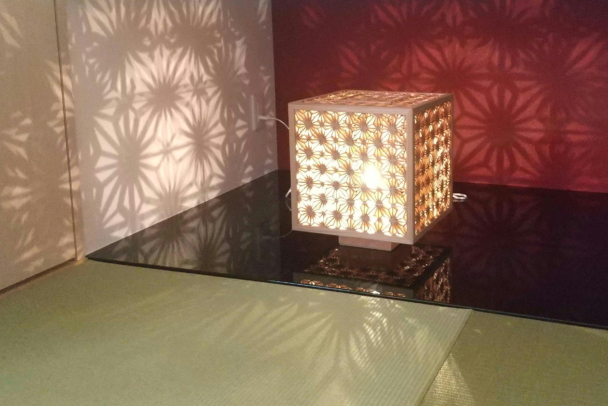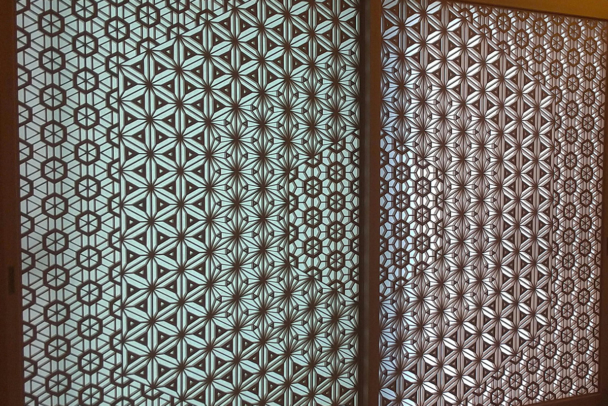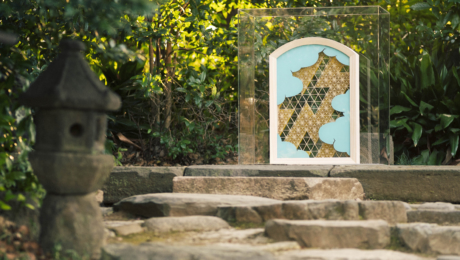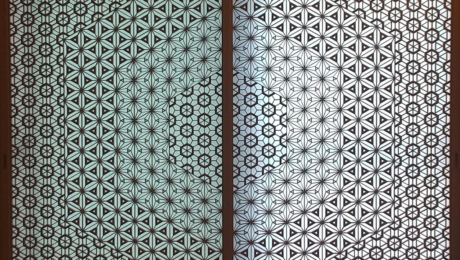

Diverse Creations Made Using Delicate Kumiko Handiwork
The beautiful geometric patterns of hemp leaves and tortoise shell are thrown into contrast as soft light passes through a paper sliding door. Kumiko handiwork is a traditional Japanese woodworking technique in which small pieces of wood are combined by hand to create various patters without using any nails. At the end of the Heian period, as paper sliding doors, transoms, and other fittings were developing with the times, kumiko evolved as a decorative technique before blossoming in the Edo period. More than 200 patterns have been passed down to the present day, including flowers, snowflakes, and auspicious patterns.
Edo Kumiko Tatematsu carries on the traditional techniques while also making new creations. The founder, Matsuo Tanaka, studied kumiko techniques on his own while training at a fittings shop and went independent in 1982. Currently, together with his son and successor, Takahiro Tanaka, Matsuo continues to do the delicate work solely by hand without the use of machines.
The production of fine and elaborate kumiko handiwork begins with the selection of good quality wood. Japan’s three famous woods are primarily used: Kiso hinoki cypress, Akita cedar, and Aomori hiba. The lumber is planked, grooved, mortised and tenoned before being assembled. First a large framework is formed using lattice or diamond assemblies, then delicate wooden parts are combined within each cell to create a pattern. “Even a small deviation can prevent them from fitting. Tolerances are less than 0.1mm,” says Mr. Tanaka. He regularly performs sales demonstrations at department stores all across Japan in order to teach people about how profound this delicate technique is.
Although demand for fittings has been declining recently, the workshop has determinedly created products which meet more modern needs. Various products which fully express the beauty of kumiko handiwork have begun to garner popularity: tables, cabinets and other furniture; vases, coasters and other accessories; and paper lantern-style lighting.
“We want to pay homage to our traditions while also spreading our everyday kumiko products all across Japan and around the world.”






